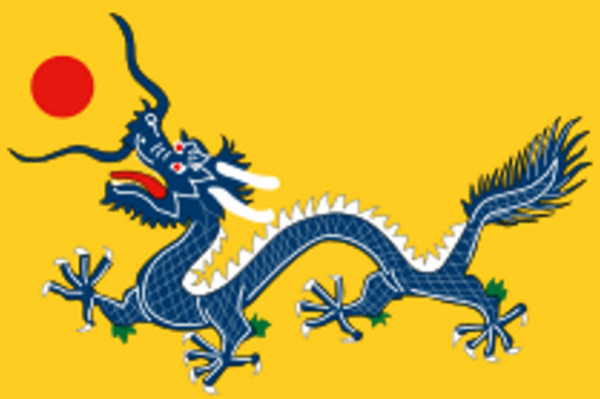
Over the last three years the Study Group has considered, researched, and presented papers on the Chinese dynasties from the Han to the Ming. We enjoy choosing a subject, finding out as much as we can about it, and then preparing and presenting a paper. We do not take ourselves too seriously, but we do enjoy hearing what other members of the group have discovered and interacting with them in a relaxed atmosphere. It is a stimulating experience to learn so much history and art, particularly when one is part of a group which enjoys sharing such information. There is, of course, no requirement to attend each session in the term.
Like its predecessors, the Qing came to power on the back of rebellion and a loss of the Mandate of Heaven by the Ming emperors. Some 260 years later, it was to follow the same route to extinction, not just of the dynasty but also the empire. The country was in the process of changing forever. The change witnessed new styles in the decorative arts, influenced sometimes by burgeoning foreign trade and customs, but more frequently by “home grown” developments. As a result, artistic endeavours rose to a standard of quality hitherto unseen. Jade and ivory carving reached a peak of creativity and excellence, whilst lacquerware, seal carving, furniture design, and cloisonné* attracted collectors keen to acquire new masterpieces. Amongst the contemporaneous collectors was the Qinglong Emperor, whose acquisitiveness led to the creation of impressive collections, which even today never fail to impress. Painting took on Western influences, as shown by the style of individual artists such as Gong Xian and, to a lesser degree, by the court artists. The Lingnan school of artists thrived during the latter part of the dynasty. The advent of short stories, the composition of more broadly based poetry and the popularity of Peking opera all pointed to a rising, better educated, and healthier population. Romances such as “Dream of the Red Chamber” appealed to a more literate population, whilst a series of published encyclopedias and dictionaries may well have benefitted those who undertook the study and the rigorous requirements for the Imperial Examinations, which had been revised and reintroduced.
The Shenyang imperial palace in Liaoning created early in the dynasty and the later additions and improvements to the Forbidden City, all illustrate the developments in architecture. Industrialisation was making itself felt and weapons of war were being produced to meet the constant threat of rebellion and incursion by foreign powers. The White Lotus Rebellion, the Taiping Revolt, the Boxer Rebellions, and the Opium Wars all show vividly the collapse of the dynasty and the troubled times leading to the 1911 Revolution.
Inevitably the 260 years produced a number of personalities, all of whom made their own mark, for better or worse. They include: the Qianlong Emperor, the Dowager Empress Cixi,* Sun Yat Sen, Pu Yi*, Aurel Stein, Prince Dorgon, Gong Xian, Zeng Guofan, Liang Qichao, Sir Robert Hart*, Yuan Shi Kai, and Hong Xiuquan.
(Please note that those subjects marked * are already reserved)
We believe that there are many interesting skills, personalities, events, and achievements of the dynasty which would be fun to explore further. Do join us for what will be a fascinating and rewarding series of presentations on the Qing. You will not be disappointed.
Bookings and Enquiries:
Contact Patrick Moss at